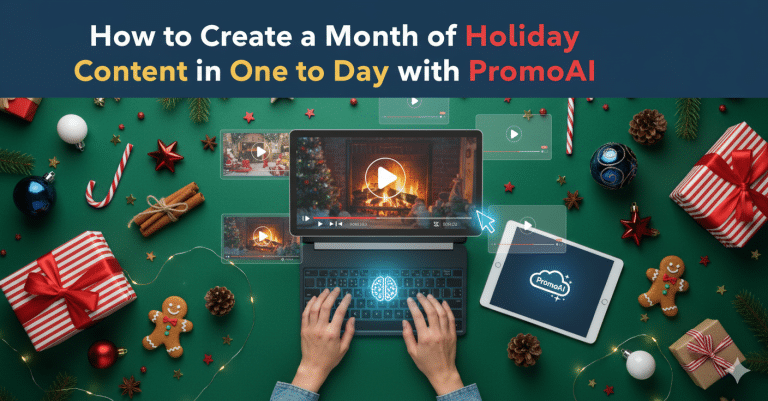
12 Marketing Mistakes To Avoid No Matter What
The world of online marketing provides exciting opportunities for businesses of all kinds. You have the ability to hyper-target a specific type of customer, engage them on multiple platforms, and produce content that can drive sales.
Online marketing is a must-have for any business. For small businesses, it may be even more important as you compete for digital space among your competitors. Standing out among the crowd can be difficult, but an effective online marketing strategy can yield tremendous results.
Still, navigating the online marketing waters can be tricky for the unfamiliar. If you’re a small business owner, it can seem overwhelming! While not every marketing strategy you employ will be a slam dunk, there are a few common marketing mistakes that you should try to avoid no matter what!
Don’t say we didn’t warn you about these.
1. Spending Too Much, Too Quickly
You’ve got a great idea. You’ve got your products ready. Your online store is open for business. This is going to be the greatest online company ever so naturally, it’s time to break the bank on marketing, right?
Wrong. Spending too much on “big marketing” can run you into a lot of problems early on. For one, you’ll run out of money. Second, as a new online business, the odds are that even a large, expensive online marketing push isn’t going to move the needle much.
You’ve got a lot of trial and error, testing, and research to do before going nuts. Slow and steady wins the race here.
2. You Don’t Measure Results
Remember that time about 5 seconds ago when we said you have a lot of “trial and error, testing, and research” to do? Yeah, we remember it too and it’s an important part of your online marketing strategy. The truth is that not every marketing strategy works. Not every platform will be right for your business and not every advertisement, video, banner ad, or email campaign will yield the results you want.
That is why online marketers are always testing, analyzing, measuring results, and making changes along the way. You’d be amazed at how changing an email subject line or a video title can make a big impact. Test, measure, and test again.
3. Not Knowing What “The Other Guys” Are Up To
New businesses sometimes fall victim to thinking in a silo. What does that mean? That means the mentality is “we’re doing our thing and we don’t care what else is going on.” It’s true that you shouldn’t try to chase your competitors, but not knowing what they’re doing is also a mistake.
Look at your three largest competitors. What are they doing with their online marketing? What platforms are they on? What ads are they running? You can observe what is working in your industry without having to find out the hard way.
4. Not Marketing To YOUR Customer
Who is your ideal customer? And don’t say “everyone.” Simply put, every company from Apple to Xerox knows who their ideal customer is. Determine who that is for you and target that customer. You can always expand your online marketing efforts later but in the beginning, cast a deep net. Not a wide one.
5. All Your Eggs. One Basket. Don’t Do It
Facebook is a great place for your online marketing. Share posts, videos, links to your products, and more. The same can be said for most social media sites. And for email marketing. And video marketing. And so on.
The point is if you focus solely on one channel you’re missing out on all the other ones.
6. If You Fail to Plan, You Plan to Fail
This is a common online marketing mistake, but it’s also a common business one. Very, very, very few successful businesses are “winging it” out there. Do you think Apple develops a new iPhone and says “well, we’ll just run some ads for it and people will buy it, I guess?”
No, their marketing and promotion strategy is planned out well in advance. Take the time to plan your strategy. This doesn’t mean you can’t make changes (remember: test, measure, test again), but it’s a lot better than throwing things against the wall and seeing what sticks.
7. Ignoring The 80/20 Rule
You’ve probably heard this one before: 80% of your business comes from 20% of your customers. The exact percentages may change but the fact is that building repeat business is essential to a strong, healthy business.
When formulating your online marketing strategy, focus on building relationships with your customers, not just “one and done sales.” Promotions, rewards, and loyalty programs are great for this.
8. Timing Is Everything
Remember how Apple isn’t just winging it with their marketing? The truth is you will start to see Apple ramp up their marketing efforts in advance of a new product launch. A teaser video here, a product photo there, etc.
Timing is everything. You want to generate a certain amount of hype and interest. However, you want to time your efforts properly. Too early and people may get tired of waiting. Too late and the moment’s passed. Just right, Goldilocks. Juuuuust right.
9. Ignoring Feedback
We’ve all seen ads that make us scratch our heads. “Someone actually thought this was a good idea?” True, even the big companies get it wrong every now and then. This is why gathering feedback is essential. Are customers responding to your message? Is the campaign effective?
If you can afford focus group or product testing, it can be a valuable way to obtain objective feedback from potential customers. Mind you, not every piece of feedback should be acted on, but all should be listened to.
10. Giving Away The Store
Promotions, deals, discounts, giveaways. These methods can all work in moderation. However, they can also cheapen your product. A discount is nice, but if it’s offered too often you’ll train customers to wait for the sale and not buy at full price. What’s more, you may come to establish the value of your product at that lower price.
Remember, something is only worth what somebody else is willing to pay for it. If customers aren’t willing to pay the price you want but will pay the cheaper price: guess which one your product is really worth?
Everything in moderation. Save the deep discounts for special events such as holidays or to clear inventory.
11. Who’s Calling?
In online marketing, the “call to action” is almost sacred. This is the part of your video, ad, or email message that tells your customers what you want them to do next and is usually accompanied by a link or button for customers to select. “Call now!” “Buy Here!” “Visit Our Store” etc. Make sure your call to action is both clear and engaging.
You can also get creative with it, but don’t be confusing. A product or company that is space-themed might say “Blast Off!” as their call to action, but is this clear? “Launch Our Website For More Savings” might be more effective. Or, “Blast Off To Our Website To See More Great Deals!”
12. Confusing “Marketing” and “Advertising.”
Even though the terms are often used interchangeably, marketing and advertising really aren’t the same thing. Advertising is more of a part of an overall marketing strategy. Look at it like this: marketing encompasses everything you do, all of the actions you take, to create awareness, interest, and sales of your product.
Advertising is just one piece of that puzzle. Online marketing as many moving parts and they’re not all advertisements. For example, you can create a video advertisement and generate sales from it. You can also create a fun marketing video that builds interest and engages your audience but whose sole purpose is not to sell a specific product. Remember when we talked about teaser videos way back at #8? Those are marketing videos. Not advertisements.
Both are important, but a great online marketing plan is about more than just telling customers to buy your product.
Ready To Get Marketing?
Online marketing is essential for any business looking to generate awareness, engage with customers, and create revenue for your business. It can also be a series of trials and errors. Heck, even the big companies and their unlimited budgets have a few swings and misses along the way.
Online marketing is not difficult, but it is a process. Undoubtedly, mistakes will happen. The important part is learning from them and figuring out how to do better your next time out. Although if you’ve made it this far, there should be at least 12 online marketing mistakes you can avoid!


